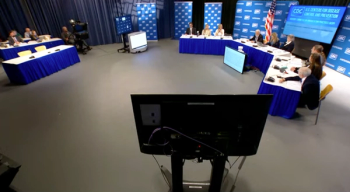
How to easily get patients with high deductibles to always pay
Recent price transparency regulations can create a win-win for physicians and patients.
High-deductible health plans (HDHPs) have become
For private practices nationwide, providing quality care is too often overshadowed by the need to address patient complaints and refusal to pay medical bills. However, with the help of recent price transparency regulations, practices can take specific steps to minimize friction in the payment collection process while creating a financial win-win situation for patients and practices alike. Note that this article’s scope is limited to patients with private insurance, excluding Medicare and Medicaid.
Why patients don’t want to pay
Fundamentally, most patients avoid or delay paying medical bills because they have the wrong expectations for their out-of-pocket cost before, during and after their appointment. This is primarily due to insurance companies failing to efficiently and accurately communicate coverage of services to both patients and providers ahead of a visit. It’s further exacerbated by many patients not understanding the basics of their insurance, such as how copays, deductibles and coinsurance work. Then after the payer adjudicates the claim, the bill sent to the patient is too complicated with billing codes and medical terminology for patients to understand their charges. Given the combination of these factors, it’s unsurprising that patients often question any medical bills for services that they did not request or that they believed insurance should cover.
However, this leads to several challenges for practices in collecting payments, especially once the patient has left the office. Billing statements are traditionally mailed out, incurring postage costs, but patients may not check their mail regularly. Patients might also forget to pay or call the office with any billing questions during business hours. Consequently, practices must often waste time and resources discussing insurance coverage and medical bills while repeatedly calling patients or eventually outsourcing the debt to a collection agency. Even if the end result is that the patient pays, they may go on to leave a negative review on online platforms, which can hurt the practice’s online reputation.
How to optimize payment collection with price transparency
Practices can adopt several proactive measures to ensure patients have the correct expectations on price while ensuring a seamless payment process.
- Practices must first and foremost maintain a list of the most commonly billed Current Procedural Terminology (CPT) codes (e.g., evaluation and management codes and common procedures) along with the corresponding contractual allowed amount across all payers. These allowed amounts can be manually requested from payers or pulled from historical claims.
- Then, for every patient, ask for the visit reason and insurance details before scheduling an appointment. On the day of their appointment, verify their insurance by calling the insurance company or using an eligibility vendor or practice management software. If the patient has a high remaining deductible, pair the eligibility response with your list of CPT codes and allowed amounts to determine the patient’s likely out-of-pocket responsibility. When the patient arrives for their appointment, share the list of possible care paths along with their estimated costs to help them understand what they may owe based on their insurance. With up-front cost estimations, patients will appreciate the added visibility before and while receiving treatment options.
- Finally, implement a down payment policy for patients to pay for their treatment while they’re still in the office. Communicate that the amount owed is based on estimated costs provided directly by their insurance company, and reassure them that they will be refunded if their insurance determines they owe more.
Solutions to automate payment processes
The aforementioned steps will greatly improve payment collections, although they may also require significant effort to train staff to implement. With that said, software solutions are available to automate these processes, allowing staff to focus on more impactful tasks.
- Enable patients to pay online and send payment notices via email. Almost every electronic health record/electronic medical record or practice management software offers an option to implement patient portals that streamline billing.
- Due to the
CMS Transparency in Coverage Rule that requires payers to publish all providers’ negotiated rates, there are now vendors who can manage and retrieve all contracted rates for providers. These vendors can additionally help providers renegotiate contracts with payers by referencing competitor reimbursement rates. - There are many software companies that offer patient cost estimator tools. Though most are built for hospitals or health systems, they can generally also be adopted by private practices. Some will even handle predicting the list of services that may be done based on the patient’s visit reason to provide a more comprehensive cost estimate.
These strategies and software tools empower practices to set clear financial expectations for patients, which minimizes confusion, reduces the likelihood of disputes and leads to more on-time payments. By prioritizing patient financial transparency, practices can navigate the challenges associated with collecting payments from patients with HDHPs, ultimately ensuring financial stability and enhancing patient satisfaction.
Kevin Chiu is CEO and co-founder of
Newsletter
Stay informed and empowered with Medical Economics enewsletter, delivering expert insights, financial strategies, practice management tips and technology trends — tailored for today’s physicians.















